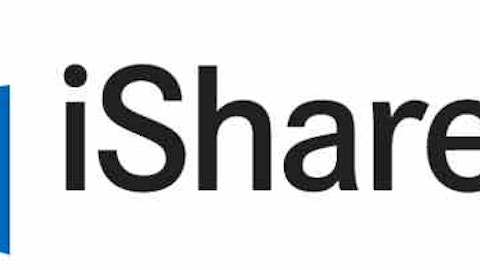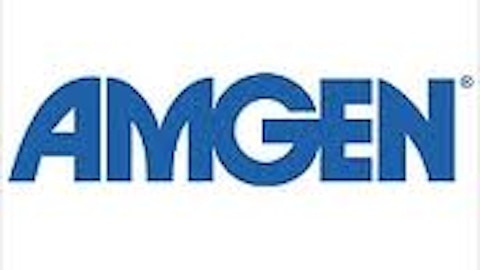
Copaxone patent expiration – measures to face losses
Let us look at some facts that will help allay concerns surrounding the patent expiration of Copaxone, Teva Pharmaceutical Industries Ltd (ADR) (NYSE:TEVA)’s blockbuster drug for multiple sclerosis. This drug generates about 20% of the company’s sales, which amounts to about $4.1 billion. The company will lose patent exclusivity for this drug in 2015. A bit of time left for that to happen, so Copaxone can consider launching the generic version of this drug and capturing a large market share.
I offer this suggestion for more than one reason. In the case of Copaxone, this patent expiration can actually turn out to be beneficial if it decides to produce the generic version itself. This is because the company already faces tough competition from the sale of other multiple sclerosis drugs by companies like Biogen Idec Inc. (NASDAQ:BIIB), Bayer, Pfizer Inc. (NYSE:PFE) and Merck & Co., Inc. (NYSE:MRK). The earlier launch of a high-quality generic will not only help it to continue generating revenues from this molecule but also compete against the other branded drugs as a generic.
Yet another reason for which I stress that the company should consider launching Copaxone’s generic, is because Teva Pharmaceutical Industries Ltd (ADR) (NYSE:TEVA) says that the drug is a “highly complicated product to develop and manufacture, and given the inability to fully characterize the active ingredients of Copaxone, Teva has serious doubts about any generic applicant’s ability to demonstrate conclusively that the composition of its product is identical to that of Copaxone.” Recently, the company had contested Mylan (NASDAQ:MYL) Pharma’s ANDA (abbreviate new drug application) and given the complexity of the product, can do so successfully in future with other contenders as well. This would give it even more time to prepare itself to be the first to launch the generic.
Teva’s current measures to deal with the patent exclusivity loss include creating a 40 mg 3 times a week dose as a replacement of the present 20 mg dose. This dosage is likely to be more convenient for patients. Additionally, the company is doing research to create drug combinations which would be more efficacious in the treatment of multiple sclerosis. It is also partnering with Active Biotech, in developing and marketing its drug for multiple sclerosis. These measures are taking the company in the right direction in terms of continuing to stay associated with multiple sclerosis therapy development.
New CEO, new strategy – for better and not worse
New agenda for acquisitions and collaborations
While change always brings along challenges with it, the transition being implemented by CEO Jeremy M. Levin, will in some ways make things a bit easier for Teva, I believe. The CEO is not looking at continuing the trend of large-scale acquisitions that the company has been involved with in the past. Buying large rival organizations brings in more managerial challenges than acquiring smaller promising firms. When acquired companies are large, it can be more difficult to integrate them into the acquiring organization and they bring about cost structure inflation issues as well. Smaller companies, not always, but often can be integrated faster and with relative ease.
Additionally, Levin’s previous experience with overseeing the “String of Pearls” model implemented at Bristol Myers Squibb gives hope that his “Constellation of Transactions” M&A strategy will have a strong likelihood of success at Teva Pharmaceutical Industries Ltd (ADR) (NYSE:TEVA). I find the approach in Teva’s new deals promising. Milestone payments and staged investments, in my opinion, are the way forward in business transactions. In the licensing deal that Teva has entered with Xenon, the company is supposed to make milestone payments beyond an initial $41 million fee for the development and marketing of XEN402, a molecule for treatment of disorders involving chronic pain. This gives the company the opportunity to invest based on progress rather than blindly bet on a project’s success.
New Therapeutic Entities
This new idea has got me excited regarding Teva’s future drug pipeline. Often during the course of research we find molecules that are implicated in various disorders because they are a part of several physiological processes in the body. Therefore, Teva’s plan to work on integrated generic drugs that would offer greater benefits in terms of risk and development is welcome. The development of about 10 to 15 NTEs is planned for 2013. One of the ideas is to combine an antipsychotic with a weight-loss drug to reduce the weight gain associated with antipsychotics. A simple combination such as this is good for a start. Eventually, studying the effects of molecules over multiple disorders and pursuing the most promising therapies will lead to greater success for the company.
Competitors
One of Teva’s competitors, Actavis Inc (NYSE:ACT) witnessed a 70% fall in its revenues in the 4th quarter. The company, earlier called Watson Pharmaceuticals, recently acquired a Swiss-Icelandic generics manufacturer, and decided to adopt its name since it is more recognized globally. This large acquisition might lead to some growth pangs for Actavis Inc (NYSE:ACT), and the effects of its multi-year rebranding campaign will only be seen in the coming few years. The company’s operating margin is 12%, which is substantially lower than Teva’s 21%.
Another one of Teva Pharmaceutical Industries Ltd (ADR) (NYSE:TEVA)’s competitors is Mylan Inc. (NASDAQ: MYL), which is a generics drugs manufacturer. Like other generic drug makers Mylan Inc. (NASDAQ: MYL) is set to benefit from the patent cliff, however, it does not compare with Teva in the type of revenue generation (Mylan’s $6.7 billion compared to Teva’s roughly $20 billion revenues) that the latter can achieve with branded drugs as well. Also, a point to note is that Mylan Inc. (NASDAQ: MYL) lost out when Teva contested its ANDA application for a Copaxone generic this year. Such losses are not favourable because they indicate a company’s inability to effectively gauge the type of drugs they can attempt to replicate, and hence, place a question mark against their competency.
Conclusion
Teva’s new strategy in terms of organic and inorganic growth looks very promising. It is preparing itself well against the loss of revenues due to patent expirations. On the other hand, being a generics manufacturer itself, Teva Pharmaceutical Industries Ltd (ADR) (NYSE:TEVA) will benefit from the patent cliff. Teva’s transition is likely to be effective with long-term benefits, making it a buy.
The article Teva Pharmaceuticals: Will the Transition Be Effective? originally appeared on Fool.com and is written by Sujata Dutta.
Copyright © 1995 – 2013 The Motley Fool, LLC. All rights reserved. The Motley Fool has a disclosure policy.

